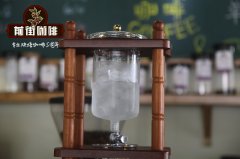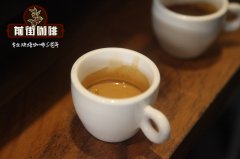What does Hawaiian coffee have to do with Kona Coffee? What's the connection between Hawaii and coffee?

Professional coffee knowledge exchange More coffee bean information Please pay attention to coffee workshop (Weixin Official Accounts cafe_style)
What Makes the Most Expensive Coffee-Kona Coffee
What does Hawaii have to do with coffee?
The Hawaiian Islands are a group of islands in the north-central Pacific Ocean. The Hawaiian Islands, also known as the Sandwich Islands from 1778 to 1898, are part of the Polynesian archipelago, an archipelago of 19 larger islands and other islets, mostly volcanic or coral islands. It lies between 19° and 29° north latitude, with the Tropic of Cancer passing through the archipelago.
Belonging to the Pacific Ocean and Oceania, it is arranged in the southeast-northwest direction, with a total length of 2400 kilometers and an area of 16705 square kilometers. The largest of these islands is the southeastmost Hawaiian Island, which locals call the Big Island. The highest point is Mauna Kea, 4205 meters above sea level.
At present, Hawaii and Ryukyu are still familiar with each other, but they also have a strange sense of alienation. Take agricultural products for example. Walking around Hawaii and Okinawa, you can easily see sugar cane, bananas, pineapples, and even taro, which are common crops in Taiwan. However, there are also some unique crops unique to each of the three islands, such as Hawaiian beans, which are believed to be the first impression of Hawaii for many people who have not yet visited Hawaii.

Within two days of the Hawaiian bean landing, it will begin to explode and change color. Within four days, the seeds of the Hawaiian bean will burst and turn brownish gray, during which time the flavor of the Hawaiian bean is at its best. If left too long, the shell will become too dark and the nuts will lose their creamy flavor. At this point, you can't call it the top Hawaiian bean.
"Hawaiian coffee", early due to the pursuit of the Japanese, due to the successful marketing of Hawaii Island (commonly known as Big Island) Kona production area, most consumers mistakenly believe that Kona is Hawaiian coffee. In fact, Kona coffee refers to coffee that is 100% produced in the Kona region. (There is also 10% Kona coffee mixed with 90% coffee beans from other regions)
In fact, under the third wave of the fine coffee revolution, coffee farms on Hawaii islands have stepped out of the shadow of "Kona only" and made their own way into the global market.
Hawaiian coffee, which is common on the market today, has coffee plantations in Maui, Kawu and Kauai, in addition to the kona area of the Big Island. Common Hawaiian coffee varieties include Typica, Mocca and Catuai.
However, Kona Coffee is still one of the most expensive coffees on the market, and according to Hawaii's Department of Agriculture regulations, only coffee on the slopes of Hualalai and Mauna Loa in Big Island, Kona District, can be called Kona Coffee. Hawaii's sunny mornings, cloudy and rainy afternoons, light breezes and mild nights, combined with mineral-rich volcanic soils, create its special flavor.
Kona Coffee is divided into two categories: Type I (flat beans) and Type II (Peaberry).
These two classes are further divided into 'Kona Extra Fancy,''Kona Fancy,''Kona Number 1,''Kona Select,' and 'Kona Prime,' according to size, moisture content, and seed purity; Type II Kona coffee is divided into 'Peaberry Number 1' and 'Peaberry Prime,' and a lower grade 'Number 3' is not called Kona Coffee.
Kona Coffee's biggest threat in recent years has been the coffee berry moth (Hypothenemus hampei) infestation, and by late November 2010, Hawaii's Department of Agriculture announced that all green beans must be fumigated with methyl bromide or another six-step procedure before leaving the Big Island.
In the future, coffee from Kona will probably fluctuate greatly in terms of production and price. Because of this, coffee farmers on Kauai, Kawu and Maui have gradually emerged in the past two years.
Important Notice :
前街咖啡 FrontStreet Coffee has moved to new addredd:
FrontStreet Coffee Address: 315,Donghua East Road,GuangZhou
Tel:020 38364473
- Prev

Costa Rica Guanacaster Coffee hand siphon Press Pot Philharmonic pressing method
Professional Coffee knowledge Exchange more information on coffee beans Please follow Coffee Workshop (official Wechat account cafe_style) Guanacaster Nature Reserve, Costa Rica is an important natural habitat that maintains biological diversity, including the best dryland forest habitat, biological communities from Central America to northern Mexico and major endangered plants and animals. This place
- Next

Espresso in Vienna is usually added with whipped cream and wine, Viennese fancy coffee.
Professional coffee knowledge exchange more coffee bean information please pay attention to the coffee workshop (Wechat official account cafe_style) Vienna Caf é culture has been listed as a World Intangible Cultural Heritage by UNESCO; in my opinion, each of Vienna's traditional cafes is full of Renaissance atmosphere, every one is as beautiful as a painting hanging in a gallery.
Related
- Detailed explanation of Jadeite planting Land in Panamanian Jadeite Manor introduction to the grading system of Jadeite competitive bidding, Red bid, Green bid and Rose Summer
- Story of Coffee planting in Brenka region of Costa Rica Stonehenge Manor anaerobic heavy honey treatment of flavor mouth
- What's on the barrel of Blue Mountain Coffee beans?
- Can American coffee also pull flowers? How to use hot American style to pull out a good-looking pattern?
- Can you make a cold extract with coffee beans? What is the right proportion for cold-extracted coffee formula?
- Indonesian PWN Gold Mandrine Coffee Origin Features Flavor How to Chong? Mandolin coffee is American.
- A brief introduction to the flavor characteristics of Brazilian yellow bourbon coffee beans
- What is the effect of different water quality on the flavor of cold-extracted coffee? What kind of water is best for brewing coffee?
- Why do you think of Rose Summer whenever you mention Panamanian coffee?
- Introduction to the characteristics of authentic blue mountain coffee bean producing areas? What is the CIB Coffee Authority in Jamaica?

